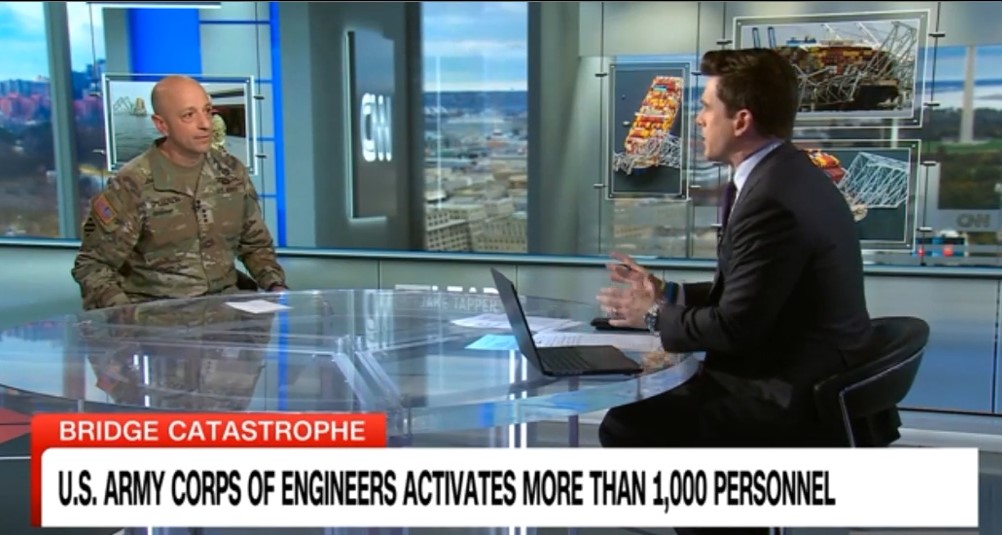In our media training workshops, we stress the importance of taking control of an interview from the beginning. This is done by thanking the interviewer for the invitation to speak, expressing empathy when appropriate and immediately launching into clear, concise messages that you have planned to deliver.
We found an excellent example of this approach in a CNN interview with Lt. Gen. Scott Spellmon, the commander of the U.S. Army Corps of Engineers. The general was interviewed in the wake of the collapse of the Francis Scott Key Bridge in Baltimore after it was hit by a cargo ship. Spellmon came to the interview knowing precisely what he wanted to say and what messages he wanted to deliver to a national television audience.
In the clip below, he confidently explains the Corps role in clearing the debris and re-opening the channel to maritime traffic.
Right from the start, it’s clear Spellmon had a game plan. He immediately expressed empathy over the loss of life and then took the audience step-by-step through the clean-up process. The general’s vocal tone and his body language, including his gestures and eye contact with the interviewer, displayed an energy that added to his credibility.
Spellmon was then asked how long the entire process would take. It was a perfectly legitimate question, but he refused to take the bait. The general declined to speculate, an approach we highly recommend. He knew that setting a deadline to complete the clean-up would put unnecessary pressure on the Corps and lead to criticism if it failed to meet it.
The general controlled this interview with authority and compassion. It’s a blueprint for you to follow during any kind of media encounter.

